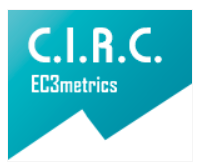Bilingual/bicultural or intercultural education for Deaf individuals within the framework of inclusive education and under a dual approach:
Educación bilingüe/bicultural o intercultural para Sordos en el marco de la educación inclusiva y bajo un enfoque dual An intersectional perspective between disability and ethnicity.
Main Article Content
ETHNICITY" is defined as a synonym for a minority group. The term "race" encompasses both biological factors (inheritance) of a human group as well as sociocultural aspects (linguistic, ritual, customs, etc.) and environmental factors, depending on where generations have developed (UNESCO, 2001).
In this regard, the question arises as to whether every minority group is considered an ethnicity. In the Colombian context, there is legislation regarding different languages spoken in the country. This aspect could establish a connection between ethnicity and the Deaf group or population. Thus, Law 982 of 2005, endorsed by the Constitutional Court in Judgment C-605/2012, has established what Constitutional Law refers to as "Conducive Rights" for Deaf individuals in terms of disability. "Access/Affirmative Actions to Rights." The Court has affirmed that: "The Deaf Community is part of the nation's pluricultural heritage and, in that sense, is comparable to indigenous peoples and communities and should possess the corresponding rights."
This leads to reflection on what is considered ethnicity, without restricting the term that is linked to the historical uniqueness of the social group, the use of other forms of language in the community, and shared cultural expressions due to their membership, all of which unite them. Similarly, it is necessary to recognize linguistic diversity mediated by a process of knowledge and tolerance for others (Universal Declaration of Linguistic Rights).
In this way, and in accordance with the aforementioned laws, there is no specific proposal for a "Deaf Person." Instead, there are general terms regarding the rights of the Deaf community and Deaf individuals as users of sign language and as a linguistic minority. Therefore, this idea is combined with that of a person with a disability to refer to individuals with hearing or sensory disabilities, placing them in a purely medical-clinical perspective.
Hence, overcoming the dichotomy of "DEAF PERSON VS. PERSON WITH A DISABILITY" implies developing a comprehensive concept in which the intercultural, multicultural, intersectional, linguistic, and cultural diversity are integrated into a single approach, the dual or Deafness approach.
Downloads
Article Details
UNESCO. (2001). Declaración Universal de la UNESCO sobre la Diversidad Cultural. París. Consultado en: [URL] (Enlace de acceso: https://es.unesco.org/about-us/legal-affairs/declaracion-universal-unesco-diversidad-cultural)
Organización Mundial de la Salud. (2001). Clasificación Internacional del Funcionamiento, de la Discapacidad y de la Salud (CIF) (Página 14). Consultado en línea en: https://aspace.org/assets/uploads/publicaciones/e74e4-cif_2001.
















